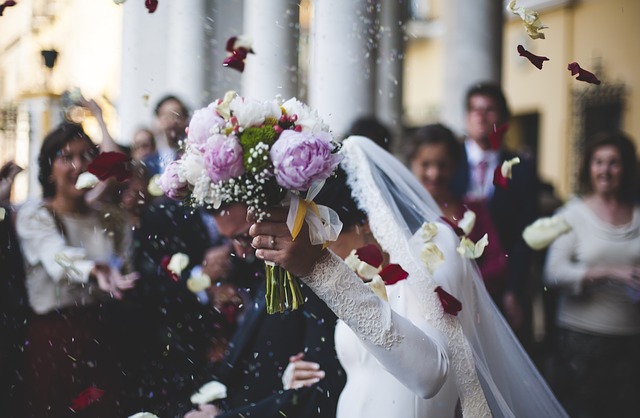By Tim Lambert
Early Marriage
Marriage occurred in all eras of history and all cultures. Polygamy (a man having more than one wife) was first mentioned in the Old Testament in Genesis. A man named Lamech married two women (Genesis 4:19). Later King David and King Solomon had many wives. Almost everybody in Ancient Israel married. There was no word in their language meaning bachelor. Marriages were normally arranged. Weddings lasted up to a week. At a wedding, musicians played harps, tambourines, and pipes.
In Ancient Greece, girls married when they were about 15. (Except in Sparta where they were typically older). Marriages were often arranged. However, women could divorce their husbands.
Things were similar in Rome. Marriages were arranged. Men were typically in their mid-20s when they married but girls were much younger – in their early or mid teens. Men and women could easily divorce their spouses.
In upper-class families, young men and women did not normally choose their marriage partners. Their parents arranged their marriages for them. Children from poor families might have more choices about who they married.
In the Middle Ages, the Church did not allow divorce but marriages were sometimes annulled. (It was declared that the marriage had never been valid).
In the 16th century, marriages were still usually arranged, except for the poorest people. Divorce was unknown. (Though marriages were occasionally annulled. That is, it was declared they had never been valid). Legally girls could marry when they were 12 years old. However, normally it was only girls from rich families who married young. The majority of women married in their mid-20s.
In Britain, the Marriage Act of 1753 stated that marriage was only valid if made in a church or chapel of the Church of England (though Jews and Quakers were exempt).
Modern Marriage
By the 19th century, marriages were usually made for love rather than being arranged by the family. Before the 19th century, women rarely got married in a white dress. People rarely wore white clothes because they were so difficult to clean! Women got married in several different colors.
However, when Queen Victoria got married in 1840 she wanted to wear a dress with lots of lace. She was advised that the best color to show off lace was white. So she wore a white dress. At that time photography was a new invention but photos were taken of Victoria in her white dress. As a result, getting married in white became common.
The bridal chorus aka ‘Here Comes the Bride’ comes from the 1850 opera Lohengrin composed by Richard Wagner in 1850. In Britain, it was traditional to throw rice over the couple at a wedding (rice was a symbol of fertility).
However, during the 19th century, the Italians began throwing tiny pieces of paper. By the end of the 19th century, the British were also throwing confetti.
The Marriage Act of 1836 allowed civil marriage in England. In the 19th century the modern Honeymoon – a couple going on holiday together after the wedding – became popular (for those who could afford it).
In the 18th century and 19th centuries, men sometimes sold their wives. (There were also cases where women sold their husbands). This strange custom arose because poor people could not divorce. (Until 1857 it took an act of parliament to dissolve a marriage so divorce was only possible for the rich).
However, the wife had to consent to the sale, and often she was sold to her lover. Selling your husband or wife was not legal but in the early 19th century it was tolerated, especially in rural communities.
However, divorce became easier after 1857 and in the late 19th century the police began to prosecute men who sold their wives. The last known case of a man selling his wife in Britain was in Leeds in 1926. He sold her for £10 (a large amount of money at that time). The woman consented to be sold but the man was prosecuted.
Divorce was made legal in Britain in 1857 but it remained rare in the 19th century. Divorce became easier in Britain following new laws in 1923 and 1937 but it remained rare. It became much easier after the Divorce Reform Act of 1969.
Today marriage remains popular. There were more than 240,000 marriages in Britain in 2016. There were more than 2 million in the USA in that year.

The Netherlands was the first country in the world to legalize same-sex marriage, in 2001.
Last revised 2024